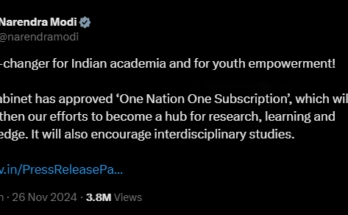OpenAI’s revolutionary text-to-video generator, Sora, promises to reshape visual content creation. Explore its potential, from personalized experiences to ethical concerns, and discover the future of AI in video.

OpenAI, the renowned research laboratory known for its advancements in artificial intelligence, has unveiled its latest creation: Sora, a revolutionary text-to-video generator. This ground-breaking tool promises to reshape the way we create and consume visual content, sparking excitement and apprehension in equal measure. Let’s delve deeper into Sora’s capabilities, potential implications, and the ethical questions it raises.
Table of Contents
From Text to Reality: How Sora Works
Sora operates through a complex interplay of deep learning techniques. Users provide a text prompt describing their desired video, and the model transforms it into a 60-second clip. This process involves:
- Understanding the text: Sora’s natural language processing capabilities analyze the prompt, extracting key elements like objects, actions, and settings.
- Generating visual elements: The model leverages its vast knowledge base of images and videos to create individual frames, stitching them together into a cohesive sequence.
- Adding motion and details: Sora incorporates concepts of physics and animation to breathe life into the scene, ensuring realistic movement and interactions.
Video Samples Generated using Sora
A Glimpse into Sora’s Potential
The ability to conjure videos from mere text descriptions opens a treasure trove of possibilities:
- Revolutionizing video content creation: From social media marketing to educational materials, Sora could streamline video production, making it accessible to a wider audience.
- Personalizing the viewing experience: Imagine AI-generated movie trailers tailored to your preferences or educational videos dynamically adapting to your learning pace.
- Boosting accessibility: Sora could be used to create audio descriptions for videos, enhancing accessibility for visually impaired viewers.
- Accelerating research and development: Rapidly visualizing scientific concepts or design ideas could expedite research and innovation across various fields.
Ethical Concerns and Challenges
However, the power of Sora comes with a responsibility to consider potential pitfalls:
- Misinformation and deepfakes: The ease of creating realistic videos raises concerns about the spread of misinformation and the creation of deepfakes, potentially impacting elections and social discourse.
- Bias and discrimination: If Sora’s training data harbors biases, it could perpetuate them in generated videos, amplifying existing inequalities.
- Job displacement: While creating new opportunities, AI-generated video could displace jobs in traditional video production industries, necessitating careful planning and support for workers.
- Regulation and control: Determining appropriate usage guidelines and regulations for such powerful technology will be crucial to mitigate its potential harms.
The Future of AI-Generated Video
Sora’s arrival marks a significant step in AI’s ability to generate creative content. While ethical considerations and challenges remain, responsible development and open dialogue are essential to ensure that this technology benefits humanity. The future of AI-generated video lies not only in its technical prowess but also in our ability to harness its potential for good while mitigating its risks.
Additional Points to Consider
- How will Sora compare to existing text-to-video tools like Google’s Imagen and Meta’s Make-A-Scene?
- What are OpenAI’s plans for making Sora accessible and affordable?
- How can we ensure that the training data used for Sora is diverse and unbiased?
- What role can education and awareness play in mitigating the potential harms of AI-generated video?
By exploring these questions, we can pave the way for a future where AI-generated video empowers creativity, fosters understanding, and serves as a force for good in our world.
I hope this detailed article provides a comprehensive overview of OpenAI’s Sora and its potential impact. Feel free to ask any further questions you may have!
Electoral Bonds in India: A Story of Anonymity, Controversy, and a Supreme Court Verdict




One Comment on “3 Game-Changing Ways OpenAI’s Sora Unleashes the Power of Text-to-Video Creation!”